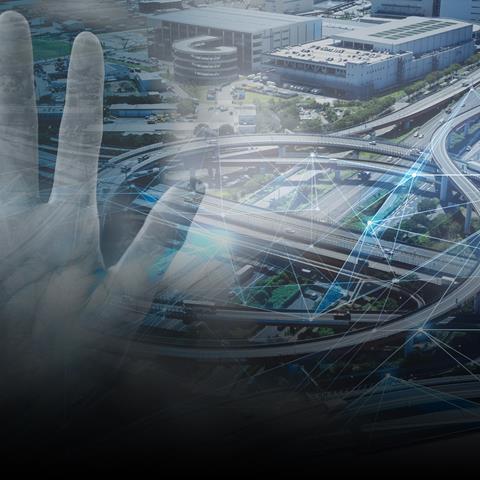By Simon Whistler, Senior Specialist, Investment Practices, PRI

Investors have a duty to act on human rights. That responsibility was formalised by the United Nations (UN) and the Organisation for Economic Cooperation and Development (OECD) in 2011, and most recently articulated by the PRI’s own framework for investor action on human rights. For infrastructure investors, the need to respect and remedy human rights should clearly resonate: fundamental human rights such as health and safety, labour rights and stakeholder engagement are non-negotiables in infrastructure projects. These issues are among the most frequently cited social issues by signatories reporting on the PRI’s infrastructure module.
Yet, the context around human rights is becoming more complex to navigate. The technology-fuelled rise of social media and global communications can make or break business and investor reputations on a range of social issues. The UK’s Modern Slavery Act[1] and the EU’s incoming requirement for human rights due diligence underline the legislative and regulatory push underway. The urgent need for a transition to a low-carbon economy may have a major social cost without support for individuals and communities left behind, as highlighted by the concept of the just transition. Each of these emphasise the need for all infrastructure investors to take a more systematic approach on human rights.
As our framework suggests, this starts with developing a clear human rights policy that filters through all aspects of an organisation’s activities. The bulk of investor action, however, lies in the pre-investment due diligence process and subsequent monitoring and management of human rights issues. Interestingly, the PRI’s reporting data suggests that infrastructure investors are better at the former than the latter.
Not just an emerging market issue
In infrastructure, human rights risks are most typically associated with projects or investments in emerging markets. In a previous blog, we highlighted how many infrastructure projects in Latin America have suffered overruns or been cancelled because of social conflict. A quick internet search will throw up many similar stories in other parts of the developing world.
However, human rights due diligence and monitoring is as relevant in developed markets as it is in emerging markets. Witness, for example, the troubles faced by major pipeline projects in the United States and Canada in relation to consultation processes and land rights, particularly involving indigenous communities. Major destinations for private infrastructure investment such as Australia, Canada and the United States were initially among the only countries to reject the 2007 United Nations declaration on the Rights of Indigenous Peoples.
Although official positions have since changed, implementation of the Declaration’s provisions, particularly around those of free, prior and informed consent for developments on indigenous territories, has been slow. Other aspects of human rights have also come increasingly into focus in developed markets: the Modern Slavery Act in the UK, for example, has helped shine a stronger spotlight on issues such as the exploitation of immigrant labour. Similarly, the growth of the so-called gig economy is leading to different types of discussions around the right to decent work.
Human rights through the supply chain
These latter issues may be more prevalent further down the supply chain of infrastructure projects. Unlike investors in listed equity or fixed income, for example, direct infrastructure investors have significant scope for managing human rights issues at the project or operational level; this has traditionally been the focus of due diligence and monitoring. However, these practices also need to extend further through the supply chain, an inherently more difficult task because of their often complex and opaque nature.
For example, many infrastructure investors and operators will seek to ensure that there are provisions in place for the health and safety and employment rights of a project’s direct workforce. However, too often gaps emerge further down the chain among the same project’s contractors and sub-contractors, either because the same policies are not imposed, their application not monitored to the same degree, or both.
The same applies to the supply of raw materials to sectors critical for the green transition, such as renewable energy and electric vehicle infrastructure. Here, research by the Business and Human Rights Resource Centre has illustrated the dichotomy that exists between the public human rights policy commitments by mining companies supplying these sectors, and the scale of allegations of human rights violations they face across a range of jurisdictions[2][3]. As the demand for important materials intensifies in the years ahead, the temptation may be for companies to cut corners on human rights, particularly in countries with a weak rule of law. In those cases, investors have a powerful role to play in holding mining companies and others in the supply chain to account.
Putting human rights into practice
So how can all infrastructure investors move forward on human rights? For many advanced practitioners, this may require little fundamental change – as highlighted above, many important human rights issues are already widely embraced by infrastructure investors. Some will have strong processes in place to carry out the right level of due diligence and stakeholder consultation, to monitor issues on an ongoing basis, and to create appropriate grievance mechanisms and provide access to remedy where failures may be identified. These are all fundamental elements of putting the UN Guiding Principles on Business and Human Rights (UNGPs) into practice. For these investors, action here may be more about better communication in relation to the UNGPs rather than substantive change to current practices.
However, strong action on human rights will not always be easy. On occasion, this will require working with other stakeholders: governments, for example. But to what extent is that feasible in jurisdictions with limited institutional protection for human rights? The same challenges may occur on co-investments or when taking minority stakes in infrastructure projects or platforms: how can investors ensure that their peers will take the same depth of action on human rights?
The PRI’s infrastructure workstream will kick off its work on human rights by gathering a series of case studies that will explore how different investors may tackle these and other critical issues. By doing so, we can highlight areas of leading practice, others where there may still be gaps to fill, and point to where further guidance may be needed to help drive human rights standards across the asset class. This is an integral element of the PRI’s agenda for the years ahead; we hope that infrastructure investors are ready to play their part.
This blog is written by PRI staff members and guest contributors. Our goal is to contribute to the broader debate around topical issues and to help showcase some of our research and other work that we undertake in support of our signatories.
Please note that although you can expect to find some posts here that broadly accord with the PRI’s official views, the blog authors write in their individual capacity and there is no “house view”. Nor do the views and opinions expressed on this blog constitute financial or other professional advice.
If you have any questions, please contact us at [email protected].
References
[1] https://www.gov.uk/government/collections/modern-slavery-bill
[2]https://old.business-humanrights.org/sites/default/files/Renewable%20Energy%20Investor%20Briefing_0.pdf
[3]See also initiatives such as the PRI-supported engagement on responsible sourcing of cobalt (https://www.unpri.org/collaborative-engagements/collaborative-engagement-on-responsible-sourcing-of-cobalt/6278.article) and the Business and Human Rights Resource Centre’s Transition Minerals Tracker (https://trackers.business-humanrights.org/transition-minerals/)












